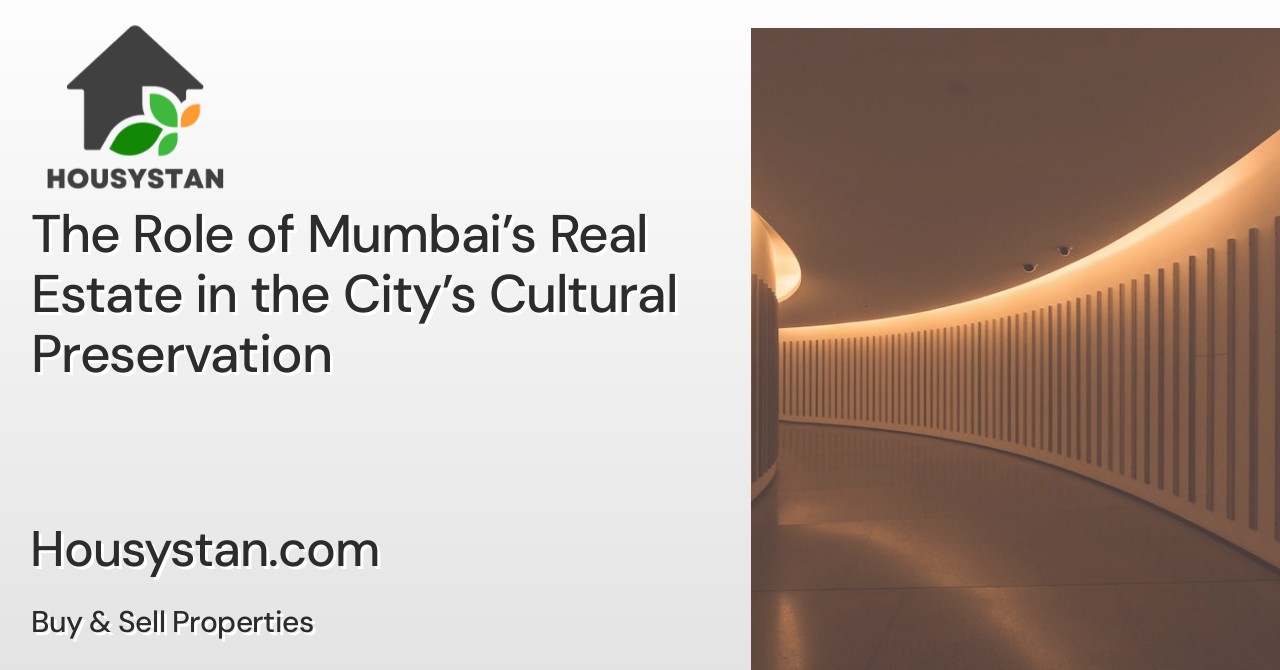The Role of Mumbai’s Real Estate in the City’s Cultural Preservation
Read latest blogs and articles from Housystan

The Information mentioned here was last updated on:
17/1/2026Mumbai, often celebrated as the financial powerhouse of India, is equally renowned for its vibrant cultural heritage. The city’s real estate sector plays a crucial role in preserving this cultural identity, blending the old with the new. As Mumbai’s skyline continues to evolve, the synergy between modern development and the conservation of heritage sites has become increasingly significant for both residents and investors.
Real estate projects in Mumbai are uniquely positioned to safeguard the city’s cultural fabric. Developers and architects are now incorporating heritage elements into contemporary structures, ensuring that iconic landmarks are not lost amid urbanization. For example, several redevelopment projects in South Mumbai carefully restore colonial-era façades while upgrading interiors to meet modern standards. This approach not only maintains the city’s historic charm but also enhances property values, making heritage conservation economically viable.
The importance of cultural preservation extends beyond aesthetics. By protecting historic neighborhoods such as Fort, Colaba, and Bandra, Mumbai’s real estate industry fosters a sense of belonging and continuity for its diverse population. These areas attract both tourists and locals, supporting small businesses, traditional artisans, and cultural festivals that define the city’s unique character. As a result, real estate developments that prioritize cultural heritage contribute directly to Mumbai’s tourism and hospitality sectors, driving economic growth while retaining authenticity.
- Verified Tenants/Buyers
- Unlimited Property Listing
- Zero subscription/charges fee
Moreover, the city’s municipal authorities and urban planning committees have introduced guidelines to encourage the integration of heritage conservation within new construction projects. By offering incentives and regulatory support, these bodies ensure that developers remain committed to protecting Mumbai’s architectural legacy. This collaborative approach between public and private sectors has set a benchmark for sustainable urban development across India.
In conclusion, Mumbai’s real estate sector is instrumental in balancing urban expansion with the preservation of its rich cultural history. Through thoughtful planning and adaptive reuse of historic structures, the industry ensures that the city’s legacy endures for future generations. For anyone interested in investing, living, or working in Mumbai, understanding the significance of cultural preservation within real estate is essential to appreciating the city’s enduring appeal.